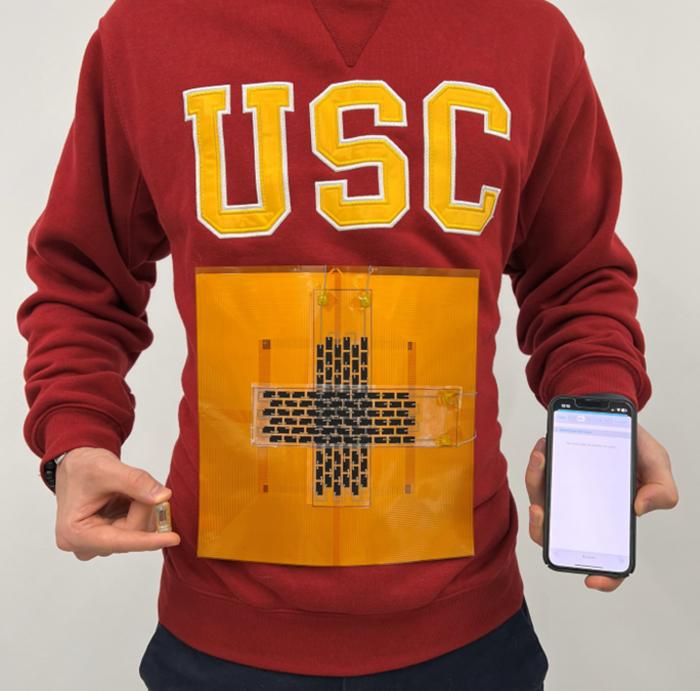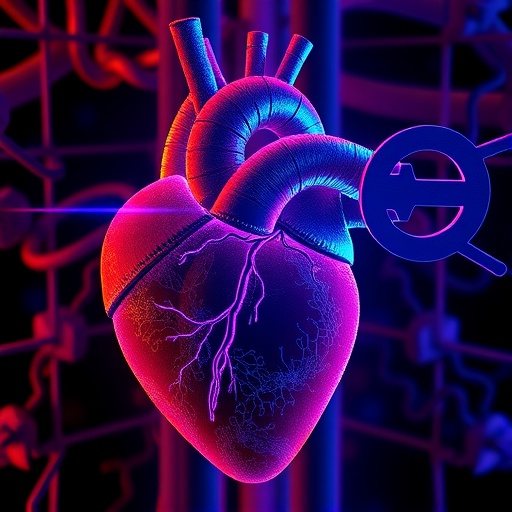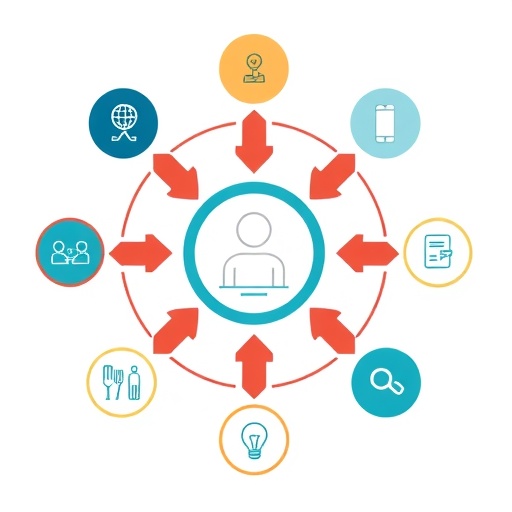Scientists at the University of Southern California have developed an artificial intelligence (AI)-powered system to track tiny devices that monitor markers of disease in the gut. Devices using the novel system may help at-risk individuals monitor their gastrointestinal (GI) tract health at home, without the need for invasive tests in hospital settings. This work appears June 12 in the journal Cell Reports Physical Science.

Credit: Khan Lab at USC
Scientists at the University of Southern California have developed an artificial intelligence (AI)-powered system to track tiny devices that monitor markers of disease in the gut. Devices using the novel system may help at-risk individuals monitor their gastrointestinal (GI) tract health at home, without the need for invasive tests in hospital settings. This work appears June 12 in the journal Cell Reports Physical Science.
“Ingestibles are like Fitbits for the gut,” says author Yasser Khan, assistant professor of electrical and computer engineering at the University of Southern California. “But tracking them once swallowed has been a significant challenge.”
Gas that is formed in the intestines when bacteria break down food can offer insights into a person’s health. Currently, to measure GI tract gases, physicians either use direct methods such as flatus collection and intestinal tube collection, or indirect methods such as breath testing and stool analysis. Ingestible capsules—devices that a user swallows—offer a promising alternative, but no such technologies have been developed for precise gas sensing.
To tackle this problem, Khan and colleagues developed a system that includes a wearable coil, which the user can conceal under a t-shirt or other clothing. The coil creates a magnetic field, which interacts with sensors embedded in an ingestible pill after it has been swallowed. AI analyzes the signals the pill receives, pinpointing where the device is located in the gut within less than a few millimeters. In addition, the system monitors 3D real-time concentrations of ammonia, a proxy for a bacteria linked with ulcers and gastric cancer, via the device’s optical gas-sensing membranes.
While previous attempts to track ingestibles as they journey through the gut have relied on bulky desktop coils, the wearable coil can be used anywhere, says Khan. The technology may also have other applications beyond measuring GI tract gases, such as identifying inflammation in the gut caused by Crohn’s disease and delivering drugs to precisely these regions.
The researchers tested the system’s performance in a variety of mediums that mimic the GI tract, including a simulated cow intestine and liquids designed to replicate stomach and intestinal fluids.
“During these tests, the device demonstrated its ability to pinpoint its location and measure levels of oxygen and ammonia gases,” says Khan. “Any ingestible device can utilize the technology we’ve developed.”
However, there are still improvements to be made to the device, says Khan, such as designing it to be smaller and to use less power. Next, as they continue to hone the device, Khan and colleagues plan to test it in pigs in order to study its safety and effectiveness in an organism with human-like biology.
“Successful outcomes from these trials will bring the device nearer to readiness for human clinical trials,” says Khan. “We are optimistic about the practicality of the system and believe it will soon be applicable for use in humans.”
###
Cell Reports Physical Science, Abidigazy et al. “3D gas mapping in the gut with AI-enabled ingestible and wearable electronics” https://cell.com/cell-reports-physical-science/fulltext/S2666-3864(24)00250-9
Cell Reports Physical Science (@CellRepPhysSci), published by Cell Press, is a broad-scope, open access journal that publishes cutting-edge research across the spectrum of the physical sciences, including chemistry, physics, materials science, energy science, engineering, and related interdisciplinary work. Visit: https://www.cell.com/cell-reports-physical-science/home. To receive Cell Press media alerts, please contact [email protected].
Journal
Cell Reports Physical Science
DOI
10.1016/j.xcrp.2024.101990
Method of Research
Experimental study
Subject of Research
Animals
Article Title
3D gas mapping in the gut with AI-enabled ingestible and wearable electronics
Article Publication Date
12-Jun-2024




